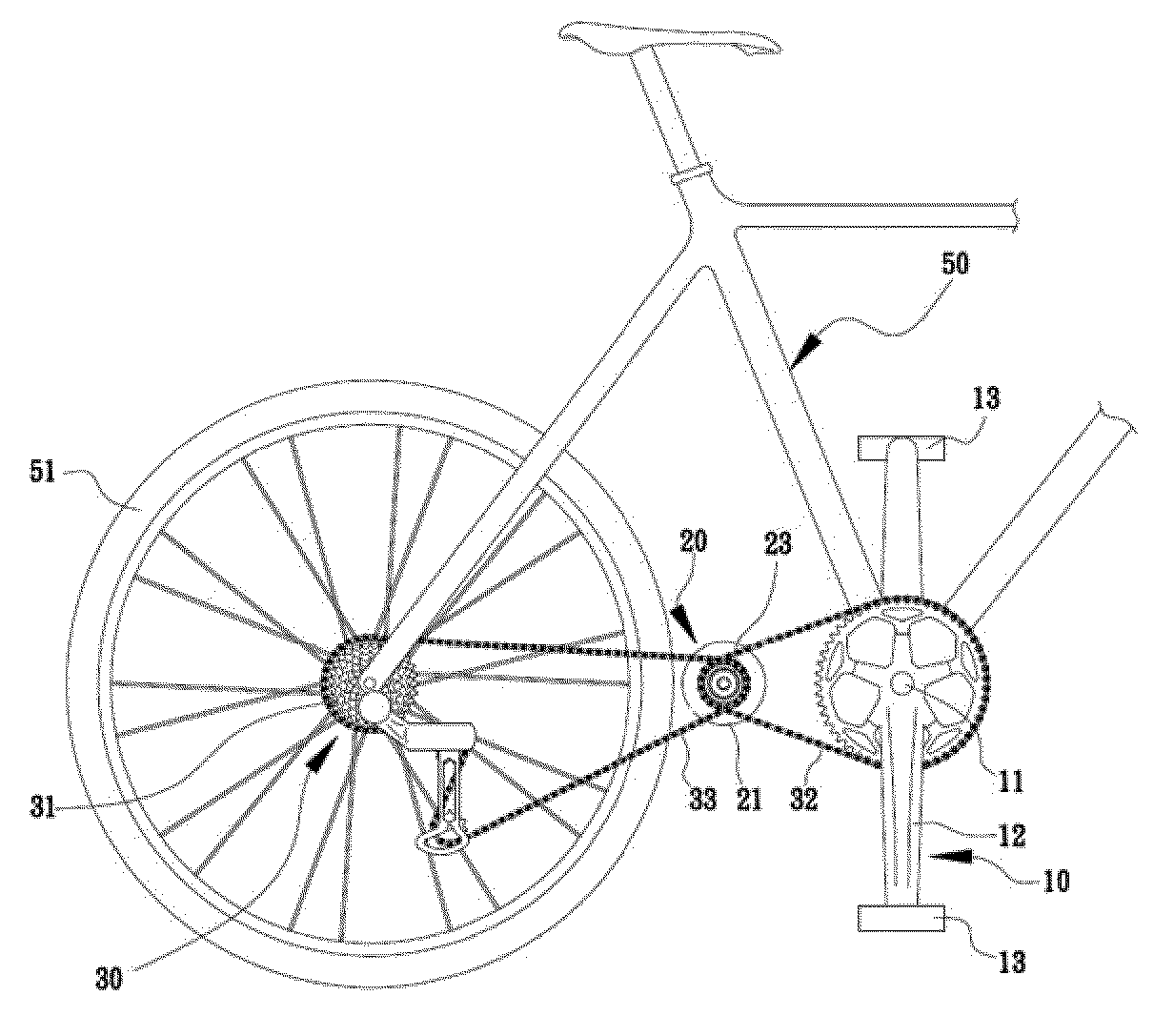Dual-Drivetrain of Power-Assist Vehicle
- Summary
- Abstract
- Description
- Claims
- Application Information
AI Technical Summary
Benefits of technology
Problems solved by technology
Method used
Image
Examples
Embodiment Construction
(1) The Preferred Embodiments
[0030]The present invention provides a dual-drivetrain for powering a vehicle by pedaling with an assistance of an attached motor (FIG. 1). It comprises a pedal-driven part 10, a motor-driven part 20, power conveying means, and a controller.
[0031]Pedal-driven part 10, also known as a crankset in a traditional bicycle, is pivotally mounted to a frame 50 of the vehicle (FIG. 1). With reference to FIGS. 2 & 5, it has at least one gear plate 11 (also called chainwheels or front gears), a pair of cranks 12 normally mounted 180 degree out of phase to gear plate 11, and a pair of pedals 13 pivotally attached to each crank 12.
[0032]Motor-driven part 20 is also firmly attached to frame 50, situated preferably between pedal-driven part 10 and a real wheel 51 (FIGS. 1 & 2). As illustrated in FIG. 3, motor-driven part 20 has an electric motor 21, a drive-gear 22, and a relay-gear 23. Both drive gear 22 and relay gear 23 are pivotally attached to the armature of elec...
PUM
 Login to View More
Login to View More Abstract
Description
Claims
Application Information
 Login to View More
Login to View More - R&D
- Intellectual Property
- Life Sciences
- Materials
- Tech Scout
- Unparalleled Data Quality
- Higher Quality Content
- 60% Fewer Hallucinations
Browse by: Latest US Patents, China's latest patents, Technical Efficacy Thesaurus, Application Domain, Technology Topic, Popular Technical Reports.
© 2025 PatSnap. All rights reserved.Legal|Privacy policy|Modern Slavery Act Transparency Statement|Sitemap|About US| Contact US: help@patsnap.com



